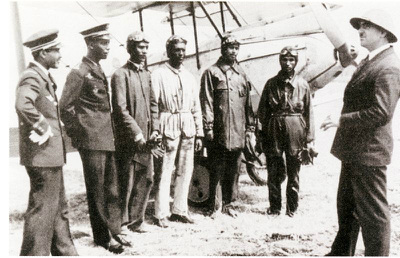Abyssinian Airforce (original) (raw)
| The origins of the Ethiopian Air Force has been traced to Haile Selassie witnessing a show of the British Royal Air Force in November 1922 in Aden. Having never seen an airplane before, he was captivated by this demonstration of their power and abilities, and spontaneously asked if he could go up in one of the biplanes, proclaiming that it was "very fitting that he, as regent of Abyssinia should be the first Abyssinian to take flight in an aeroplane." As a result of this experience, he afterwards advocated the development of the Imperial Ethiopian Air Force. This small air arm began with the delivery of a Potez 25-A2 to the capital Addis Ababa on 18 August 1929. The Ethiopian Air Force was organized by Mishka Babitchef, the first Ethiopian pilot, who was of Russian descent. A Junkers W 33c followed on 5 September.On 31 March 1930, three of the biplanes from Ethiopia's air arm played a dramatic role in a battle between Haile Selassie (not yet crowned Emperor) and conservative forces seeking his ouster. During the Battle of Anchem, biplanes were effectively used to give Haile Selassie's forces the upper hand.A few transport aircraft were also acquired during 1934-35 for ambulance work. The air force was commanded by a French pilot, Andre Maillet, who delivered the first Potez. He was succeeded by another Frenchman, Paul Corriger, who remained until the Italian conquest of Ethiopia, when the small air arm ceased to exist.2 × Beechcraft Staggerwing1 × Breda Ba.151 × de Havilland DH.60 Moth1 × de Havilland Dragon (Red Cross)1 × Farman 192 c/n?1 × Farman 190 converted to F192, c/n?1 × Fiat AS-1, lost in accident 19302 × Fokker F.VIIa (Named "Abba Dagnew" and "Abba Kagnew". The latter was used as ambulance)1 × Fokker F.VIIb/3m (used as Hailé Sélassié's personal transport, and for missions by the Red Cross)1 × Heinkel HD.21 (Red Cross)1 × Junkers W33c (acquired in 1929).6 × Potez 251 × Weber Meindl van Nes A.VII Ethiopia 1.1 breda ba. 25.1 breda ba. 28.2 Breguet XIX. |  |
|---|